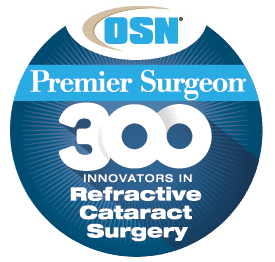
Learn about revolutionary advancements that will assist in better visual outcomes
Robotic Laser Cataract Surgery gives you the opportunity to treat your cataracts and restore your vision to its full potential in the same procedure. When you choose a robotic laser cataract procedure, you are choosing the latest technology available to treat and restore one of your most valuable senses—your sight.


Advanced robotics meets surgical expertise in this state-of-the-art cataract treatment approach. By integrating skilled doctors with precision robotic technology, this innovative procedure maximizes your visual clarity while delivering unparalleled confidence in the outcome.
A cataract occurs when the natural lens in your eye becomes cloudy, similar to looking through a foggy window. This happens gradually as you age, when proteins in the lens break down and clump together inside the eye’s natural lens. This cloudiness can make it difficult to read, drive (especially at night), or see people’s faces clearly. Cataracts are a common condition, affecting millions of people worldwide, but they can be effectively treated with surgery to restore clear vision.
Laser-assisted cataract surgery, also called laser cataract surgery, uses advanced femtosecond lasers to perform several steps of the procedure that were previously done manually during traditional cataract surgery. It includes creating the incisions, opening the lens capsule, and breaking up the cataract into tiny pieces. The laser’s precision offers a level of accuracy that is difficult to achieve manually. The type of laser used in laser-assisted cataract surgery is referred to as femtosecond laser – the same type of laser used in LASIK eye surgery.

If the world is not your patient in there and live as it once was, don’t delay seeking help. Since 1985, Dr. Stephenson at Stephenson Eye Associates, has successfully treated every common vision problem. Dr. Stephenson can help you maintain your vision and independence!
Dr. Stephenson and her staff make every effort to put you at ease. This is from her miraculous high-tech office setting to their friendly and consistent approach in caring for your vision needs. She is Board Certified in ophthalmology and fellowship trained in cataract surgery, medical retinal surgery and implantation of premium intraocular lenses, as well as laser surgery for the treatment of glaucoma, corneal and retinal eye diseases, total posterior medical to diabetes, and more.
Don’t let cataracts hold you back from enjoying life to the fullest. With Dr. Stephenson’s expertise and advanced Robotic Laser Cataract Surgery, you can regain the clear, vibrant vision you deserve.